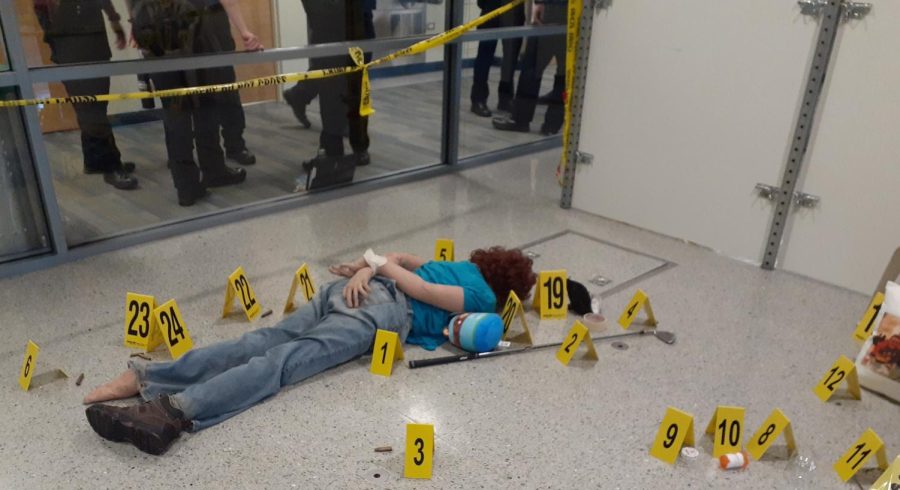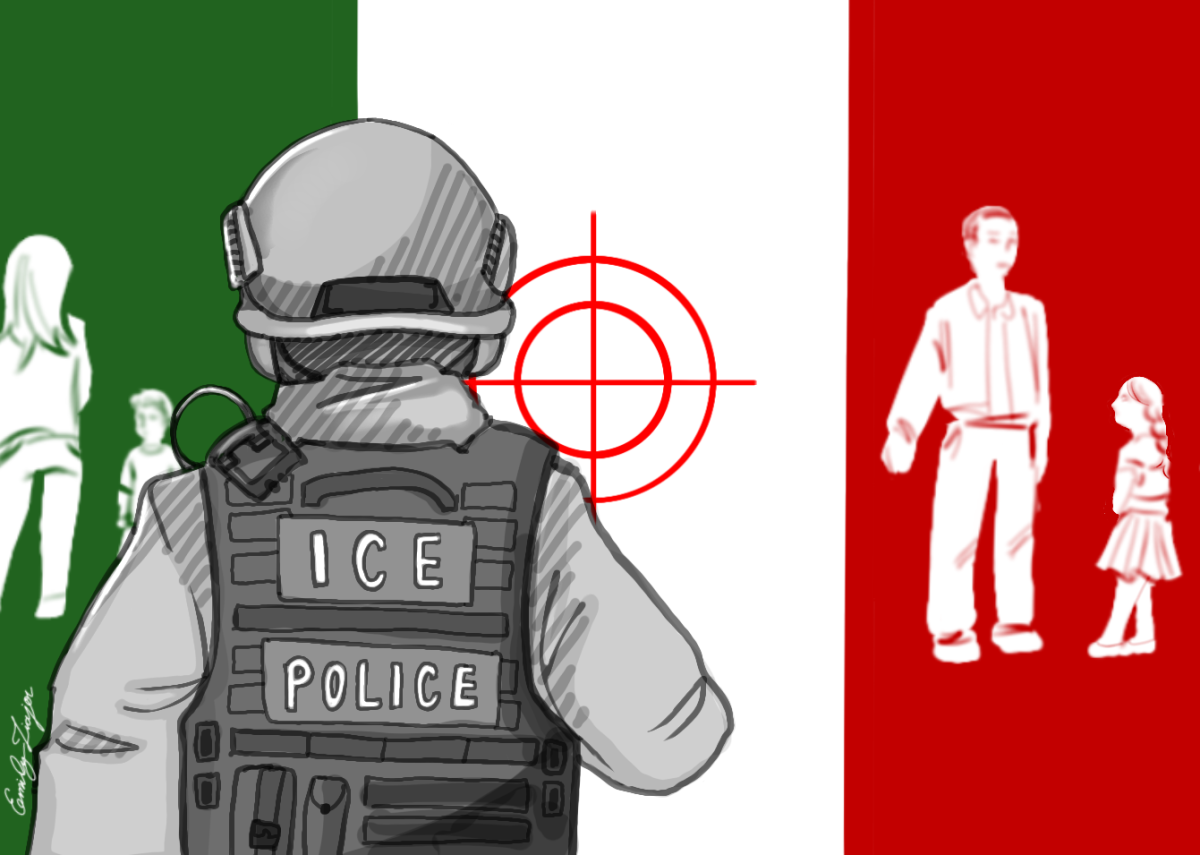Forensic CSI and the Importance of Realistic Perceptions
Here’s what you should consider as students interested in forensic science careers and the importance of having a realistic views about it.
A mock crime scene in the forensics lab, where Professor Miller’s Forensic CSI class studied crime scene sketches.
September 5, 2022
True crime is a mainstream topic in modern America. Technology advances are solving decades-old cold cases and new investigation organizations are forming. This encourages normal people to follow true crime too. College students may pursue a field of study that translates their interest into a career. There are approximately 200 students in just the introductory criminal justice classes at College of DuPage. They may go on to not only be police, but also detectives, agents, victim’s advocates, counselors, forensic techs and psychologists.
Before entering these classes though, are true crime enthusiasts really aware of the nuances of criminal investigation? Do they hold inaccurate perceptions, based on things like TV shows? This is what must be addressed to ensure people have realistic views and a responsible attitude in their approach to true crime.
A thought-provoking presentation on the reliability of forensics attracted many community members to the Glenside Library on August 25. It was presented by Theodore Darden, professor of Justice Studies at COD. The audience learned about different areas of forensic sciences, how law enforcement responds to crime, and how reliable certain types of evidence are. Forensics is the application of technology and the scientific method to criminal matters under investigation. This includes everything from medical autopsies to interrogation tactics. As technology progresses, so does the way crimes are solved.
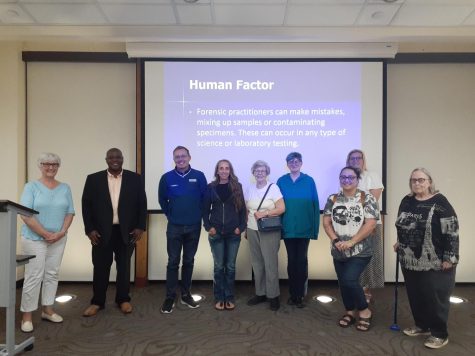
Even with these benefits of forensic investigation, there are limitations to it. Newer science challenges widely-accepted forensic techniques. Evidence doesn’t always give exact matches to suspects. It takes much more expert work and research to prove guilt beyond a reasonable doubt. In fact, most smaller law enforcement departments aren’t equipped with the expensive resources and expertise to gather and process evidence as efficiently as some expect.
This gap between expectations of forensics and reality is known as the CSI effect. Cornell Law School defines it as the flawed public views of forensics, due to the exaggerated portrayals on TV shows like “CSI” and “Criminal Minds.” The most tangible consequences are in the courtroom. Jury members may not be knowledgeable on how crime investigation works. If they just go off the oversimplified portrayals on TV, it can lead to them making skewed decisions in the convictions or acquittals of people.
When we understand the impact that inaccurate portrayals and perceptions of forensic CSI have on real life, we can improve our roles in it. Many people are passionate about the topic, from attendees of the presentation to the students in these criminal justice classes. To complement that passion, there must also be knowledge and awareness. Darden’s presentation on the reliability of forensic science mentioned how the human factor affects seemingly infallible forensic sciences. People’s level of skill, knowledge and even personal biases all factor into how they perform their jobs.
Darden concluded, “Forensics is only as good as the people entrusted to collect and process that data. Applying science to criminal justice depends on the scientists’ accurate and objective application of it.”
This is the reason his presentation gave such an immersive view of the statistics surrounding crime. We cannot view forensic CSI in a bubble. We should also learn about its place in the larger nuances of the justice system.
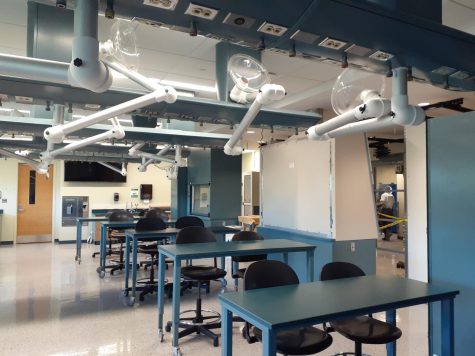
This is an important lesson to learn for current students with how to approach assignments and academic research. A great place is the forensic laboratory in the HEC, which is fully-equipped with advanced forensic technology.
In a COD YouTube video, Darden described how the lab allows students to “study evidence collection, learn how to do fingerprinting, blood splattering, death investigation… [and] take that collected evidence and analyze it as scientists would in an actual laboratory.”
This is displayed in the CRIMJ-2310 Intro to Forensic CSI class. The professor, Karen L. Miller, described how her students began the crime scene drawings module. They had a mock homicide set up and an evidence table. Instruction on the board provided students with guidelines for how to accurately draw and label the crime scene. Miller is deeply experienced in the field, as a retired police commander, and certainly provides students with a knowledgeable, realistic view into how the field works.
With teachers and resources like these, students are fortunate to be able to learn forensic criminal investigation to the best of their abilities. A current criminal justice student, Breana Lesser, commented on her experience.
“I have had an amazing experience in the criminal justice program, and the professors have been amazing. They are willing to help you in any situation and work alongside you,” Lesser said.
She is experienced in various justice study classes, as a student in the 3+1 Bachelor’s degree program with Lewis University. She described how activities within the program greatly benefitted her learning experience.
“Especially the Tennessee Trip with Professor Darden on the topic of Death Investigation and Taphonomy, which I will never forget,” Lesser recalled.
This class trip concentrated on specialty areas within forensics. It gave students an in-depth look into doing post-mortem evaluations of unidentified corpses of victims.
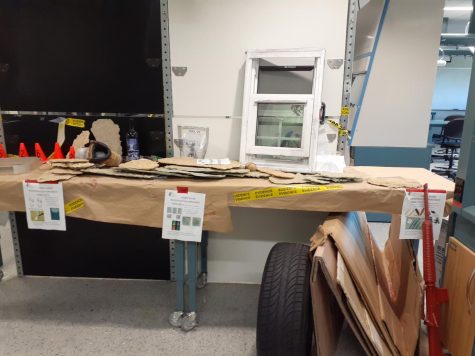
It’s also important to know what type of skills you need for your chosen concentration. For example, some students are surprised to learn forensic psychology requires a doctoral degree (PsyD). Darden encourages students to do research.
“They need to find out what the education qualifications are, research transfer schools that are suitable for them to obtain their degree(s), research internship opportunities, look for mentors in their particular field of interest, and be committed to their passions and pursuits.”
Overall, there is much to consider for students and ample opportunities to learn these things. Knowing the nuances of this important profession is integral to respecting victims and working efficiently for their justice. In a time when forensic sciences are making technological leaps, solving decades-old cold cases, we may feel particularly attracted to the field of forensic CSI. Consequently, we should be mindful of the realities of the field and how they may differ from our preconceptions. We can always learn new things to succeed in our career goals. COD students interested in forensic sciences should be sure to check this webpage. You can also get into contact with any of the criminal justice faculty.



